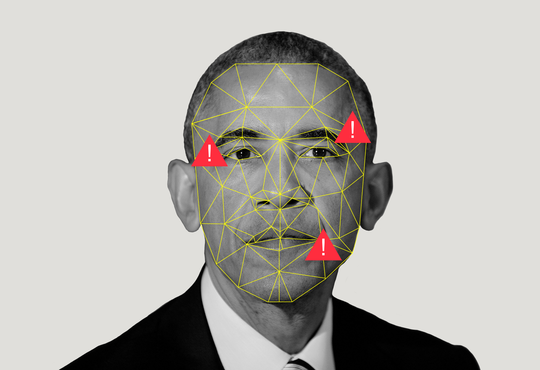Biography

Professor Bojana Videkanić is a performance artist and an art historian/theorist born in Yugoslavia. Her performance art practice mines personal experiences of displacement, movement, and identity as these intersect with larger political, social and cultural questions. Videkanić is an assistant professor in fine arts at the University of Waterloo, and a board member of the 7a*11d International Performance Art Festival Toronto. Her academic research examines the history of modernist art in the socialist Yugoslavia. She released a book on socialist modernism entitled “Nonaligned Modernities: Yugoslav Art and Culture 1945-1990”.
Videkanić has exhibited at festivals such as Nuit Blanche Toronto, 7a*11d International Performance Art Festival Toronto, MS:T International Festival from Calgary, Hemispherica, Montreal, IPA (International Performance Art) Platform and Workshop, Bristol, IMAF Serbia, Toronto Free Gallery etc. An example of her work can be viewed here.
Videkanić focuses primarily on art exhibitions along with examples of international cultural exchange to demonstrate that nonaligned art wove together politics, aesthetics, local and global influences.
Book: Nonaligned Modernities: Yugoslav Art and Culture 1945-1990
Professor Bojana Videkanić published her book Nonaligned Modernism: Yugoslav Art and Culture 1945-1950 in February of this year.

In her study of modernism and art of the 20th century, Videkanić found that there was little written about the former socialist Yugoslavia. This book was written to address the gaps in scholarship about the artistic and cultural history of Yugoslavia and its links to global modernisms. Largely due to the 1990s disintegration of this socialist country and the wars that ensued, its rich cultural and artistic history, its contributions to the founding of the Non-Aligned Movement, and anti-imperialist struggles are often not discussed in current historical accounts of the 20th century art, particularly modernism.
Traditionally, in the discussion of socialism, especially in the wake of the fall of the Soviet Union and Eastern Bloc, the scholars did not give room for understanding socialism in Eastern Europe and the Balkans in its relation to anti-imperialism and anti-colonialism in the Global South and elsewhere around the world. One of the important histories of Yugoslavia is that it was a founding country of the Non-Aligned Movement, a movement that sought ways to create networks of solidarity among various countries in Asia, Americas and Africa.
In the case of the Non-Aligned Movement, it was made up of more than 100 countries (largely post-colonial countries) who tried to stay away from the two blocks in the Cold War, choosing to work through various international fora to carve out a space of political agency and sovereignty. Videkanić looks at the culture and art in Yugoslavia that developed within this social and political realm of nonalignment. Videkanić wanted to bring forward the idea of post-coloniality, and internationalism of the 20th century as the building forces of modernism outside of the Western world.
Another key point of her argument is that modernism, as an art historical and cultural movement of the 20th century, was traditionally seen as a Western product. Contrary to this hegemonic view, art historians in the last 20 years have been arguing that modernism wasn’t a Western creation. In fact the trajectory and forms of modernism that have been always discussed in art history narratives have been deeply impacted by non-Western cultures and influences.
More importantly, the many countries outside of the West in Asia, Africa, the Americas, as well as at the margins of Europe, developed different forms of art and culture which diverged from Western modernism both aesthetically and politically. Artists coming from these countries were influenced by the politics of anti-imperialism, socialism, anti-colonialism, they were involved with nation-building, as well as creating international networks that could rival those of the West.
Inspiration
It is impossible to be unbiased in research. We are all influenced by our past, our present and our experiences.
Videkanić’s research is largely shaped by her own past and the need to understand it. Her experiences of displacement influenced the way she understands and sees the world. She is interested in researching the role of art and culture in building public consciousness, and in social and political contexts. Suturing anti-capitalism, socialism and anti-imperialism, her research stems from the need to break down hegemonic perceptions of cultures that do not belong to the neat narratives created by societies that hold political, economic and social power.
Even in her art practice, Videkanić deals with ideas of displacement, of relationship between diasporas and their countries of origin, of political and social transition, identity and otherness. She looks at how people go through the transition of socialism to capitalism and questions the ways that social bonds are destroyed in that process.
Emphasis should be on the students
Professor Videkanić came to Canada as a refugee in her teens. The experience of first living through violence of war, losing her family, home, and culture, and then coming to a new and strange country, not knowing the language, customs, history, as well as coming to a new socio-economic system of capitalism, framed the first decade and a half of her life in Canada.
In the years following her arrival, and like many other immigrants, she struggled to stay in school and complete her undergraduate degree. University had very little support for students who for various reasons do not fit the mold––students who are not middle and upper middle class, whose parents did not go to university, who are not Anglophone, who are not white, or who are differently abled. All of the structures of support that ensure student success, outside of the strictly book learning and lectures, were not there to help students.
Videkanić’s experiences of alienation from the university and its systems informs her research interests that theorize the affinities between socialism, colonialism and the need to create networks of solidarity. Her experiences also taught her that many struggles that students have with various barriers remain invisible and unrecognized by universities.
Finally, her observations of how academia functions, and her research interests have made her aware of deep structural racism in university institutions, the incredible importance of supporting and putting students (especially Black and Indigenous students) first, and the need for a systemic change. In this respect, Angela Davis, a political activist, has made it clear what the way forward is:
You know, racism is a very complex phenomenon. There are very important structural elements of racism and it’s often those structural elements that aren’t taken into consideration when there is discussion about ending racism or challenging racism. There’s also the impact on the psyche, and this is where the persistence of stereotypes comes in. The ways in which over a period of decades and centuries Black people have been dehumanized, that is to say represented as less than human, and so the representational politics that one sees through the media, that one sees in other modes of communication, that come into play in social interactions, have equated Black with criminal. And so it is not difficult to understand how they have persisted so long. The question is, why there has not been up until now a serious effort to understand the impact of racism on institutions and on individual attitudes? Until we are able to address racism in that kind of comprehensive way, the stereotypes will persist.












